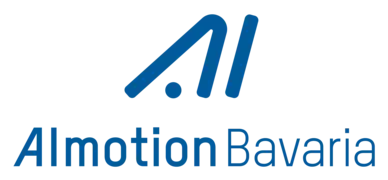ANTON is driving, recognises an obstacle and wants to drive around it. But there is oncoming traffic - ANTON stops. That's it! What sounds simple to us humans and is a regular everyday situation in road traffic is a challenge for the autonomously driving Twizy. That's why the scientists at Technische Hochschule Ingolstadt (THI) are talking about another milestone in the field of cooperative, networked and automated mobility after the successful test. Three teams consisting of researchers from the CARISSMA Research and Test Centre, the Institute for Innovative Mobility (IIMo) and the Application Centre "Networked Mobility and Infrastructure" of the Fraunhofer Institute for Transportation and Infrastructure Systems IVI joined forces for this and demonstrated the traffic of the future in a use case.
Sensors provided the car with valuable information
The big challenge here was that the demonstration was carried out in the public road area in the "First Mile" test field at Lake Auwald. Therefore, the area had to be closed off for safety reasons. Along the test field, there are numerous masts with sensors that provided the car with valuable information.
The infrastructure-based sensor technology in the test field identifies the objects on the road, for example other vehicles, cyclists or pedestrians. Particularly important for ANTON are the hidden objects that the ANTON research vehicle cannot see with its own sensors. The infrastructure informs ANTON about such objects. This enables ANTON to look "around the corner" or "through other vehicles" and react to situations or objects that are not yet in its field of vision.
In many scenarios, the interaction of the infrastructure with the vehicles can contribute significantly to avoiding risky situations. Cooperative Connected and Automated Mobility (CCAM) is one of the next big trends in the automotive industry, which was made tangible in the demonstration.
Big trend in the automotive industry
"We want to show how future connected and automated traffic will increase safety. The infrastructure sensor technology detects oncoming traffic and gives the vehicle the message whether the road is clear and it can safely avoid an obstacle or overtake a vehicle in front," said Professor Dr Gordon Elger, head of the Fraunhofer Application Center "Connected Mobility and Infrastructure".
CCAM aims to optimise the existing infrastructure, reduce the environmental impact of traffic and at the same time create more safety in traffic. Vehicles exchange information about their conditions, such as location, speed or route, and send each other warnings. This is supported by sensor technology built into the infrastructure, especially in unclear traffic situations and in bad weather conditions.
The road tests have confirmed the potential of the technology. A cooperative planning module is being integrated into the ANTON research vehicle.
The cooperation of the research institutions in this driving manoeuvre shows the success of networked and cooperative research at THI.
The following projects were involved:
The IN2lab project is developing a system for safeguarding automated driving functions. The main components are sensors on the infrastructure side for environment detection, Car2X communication for networking the vehicles, the infrastructure and the backend, and a mission control for monitoring and control. The IN2lab project is funded by the Bavarian State Ministry for Economic Affairs, Regional Development and Energy.
The ANTON project is developing an open platform based on a Renault Twizy for the development and testing of cooperative, connected and automated driving. The vehicle is enhanced with drive-by-wire, sensors and computing and communication technology, and also has approval for public roads. The ANTON project was developed and set up as part of the SAFIR research partnership (Safety for all - Innovative Research Partnership on Global Vehicle and Road Safety Systems) with support from the German Federal Ministry of Education and Research.
The CommonSense project explores new methods of environment perception by integrating state-of-the-art sensors into vehicles and AI-based data fusion of the sensors. The quality of the data fusion is increased by integrating the sensor data quality. To validate the new algorithms, approaches of virtual validation of traffic scenarios will be developed and applied in the project. The CommonSense project is funded by the Bavarian State Ministry of Economic Affairs, Regional Development and Energy.

![[Translate to English:] Zwei Autos befinden sich auf einer abgesperrten Straße](/fileadmin/_processed_/3/f/csm_Fahrversuch_ANTON_19e8317dcc.webp)
![[Translate to English:] Logo Akkreditierungsrat: Systemakkreditiert](/fileadmin/_processed_/2/8/csm_AR-Siegel_Systemakkreditierung_bc4ea3377d.webp)








![[Translate to English:] Logo IHK Ausbildungsbetrieb 2023](/fileadmin/_processed_/6/0/csm_IHK_Ausbildungsbetrieb_digital_2023_6850f47537.webp)


